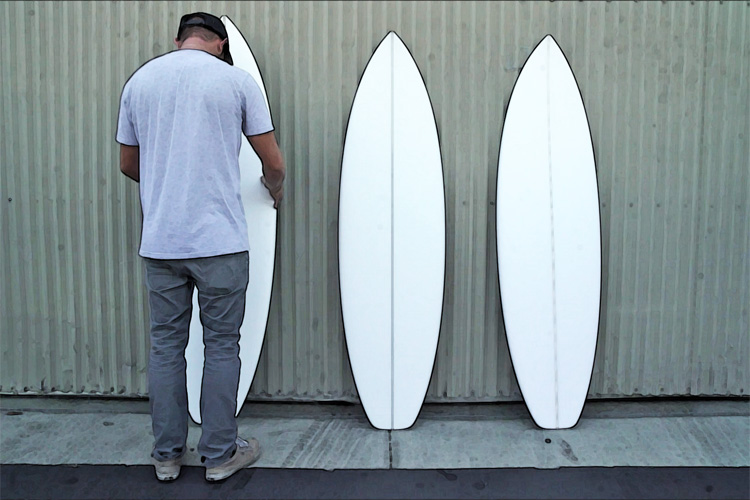Cliff Kapono, a surfer-scientist from Hawaii, invited surfboard shaper Matty Raynor to produce three identical surfboards using three different core and skin materials. Was there much difference between them?
It is estimated that over 400,000 surfboards are made each year worldwide. However, most of these boards are made with highly toxic materials that ultimately end up as waste in landfills or pollution in natural waterways, and very rarely can be reused.
How can surfers help change this scenario? How can surfboards shapers make the shift towards a more sustainable environment? Polyurethane has been ruling the surfboard world for more than five decades, but that things must change.
We must move away from the traditional materials. And that is why Cliff and Matty decided to run the test. They made three different boards, all with the same design, but with three different types of materials:
Surfboard One (Industry Standard): polyurethane foam, polyester resin, and silica fiberglass;
Surfboard Two (Bio-Based): algae foam, biolink epoxy, and silica fiberglass;
Surfboard Three (Recycled): recycled styrofoam, entropy bio epoxy, and silica fiberglass;
They wanted to see how the manufacturing process differed with different materials, and how the performance held up.
"Putting my hands on each one, there wasn't much difference between the blanks that we use and anything else that there is. So, for me, that's a positive argument for more sustainable, recycled, biodegradable foam alternatives," notes Matty Raynor.
Surfboard glassers don't get to choose. The choice comes from the shaper, but they confirm that the lamination process, and the final result is the same, whether you're working with toxic resins or bio-based epoxy.
From the surfer's point of view, there are no significant differences between traditional and sustainable surfboards.
"I felt a little bit difference in the beginning, but after about two hours riding the three boards, the differences were marginal. If I had to choose the best board, I enjoyed riding the recycled surfboard," concluded Kapono.
Let's hope the technology improves faster, and that surfers help push the industry towards a greener future by making the right decisions when buying a new surfboard.
